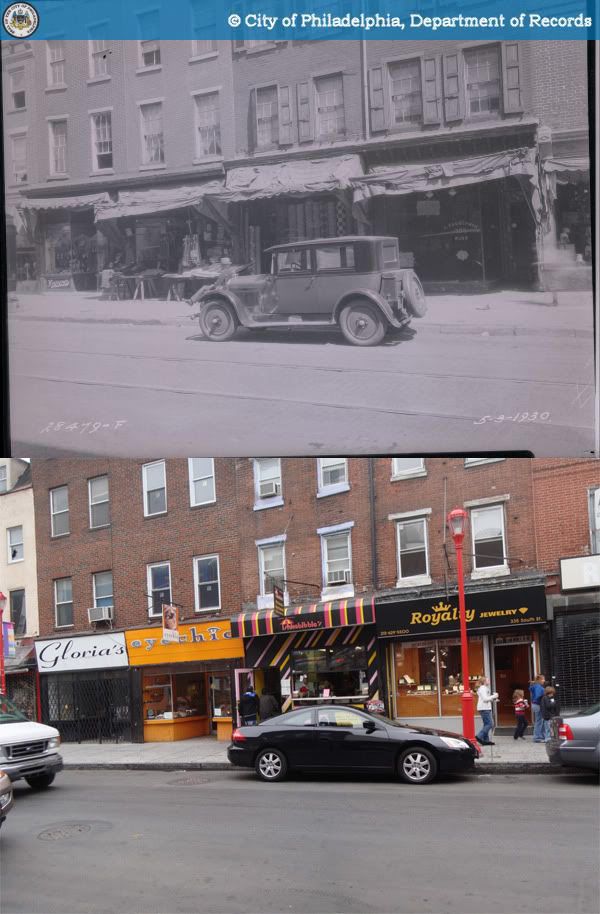c. 1920 - 2009
According records held by the Philadelphia Historical Commission, the Juniper Building at 1324 Walnut Street is the work of architect Arthur S. Love, completed in 1915. The original photograph however, has been dated as from 1921.
In my view, this picture is a true gem within the city's amazing photographic records. It seems surprising that such an artful photograph should be found within the Public Works collection. I find that there is something enchanting in the movement-blurred cars, the steamship office sign, the glimpse of proud workers, and the way the scaffolding seems to soar into the bright sky.
A horizontally aligned comparison may be found here.
Source: Philadelphia Architects and Buildings
Original photo: "Public Works-17905-0." 1921. Philadelphia City Archives. PhillyHistory.org. Philadelphia Department of Records. 3 Dec. 2009. http://www.phillyhistory.org/PhotoArchive/MediaStream.ashx?mediaId=102451.







